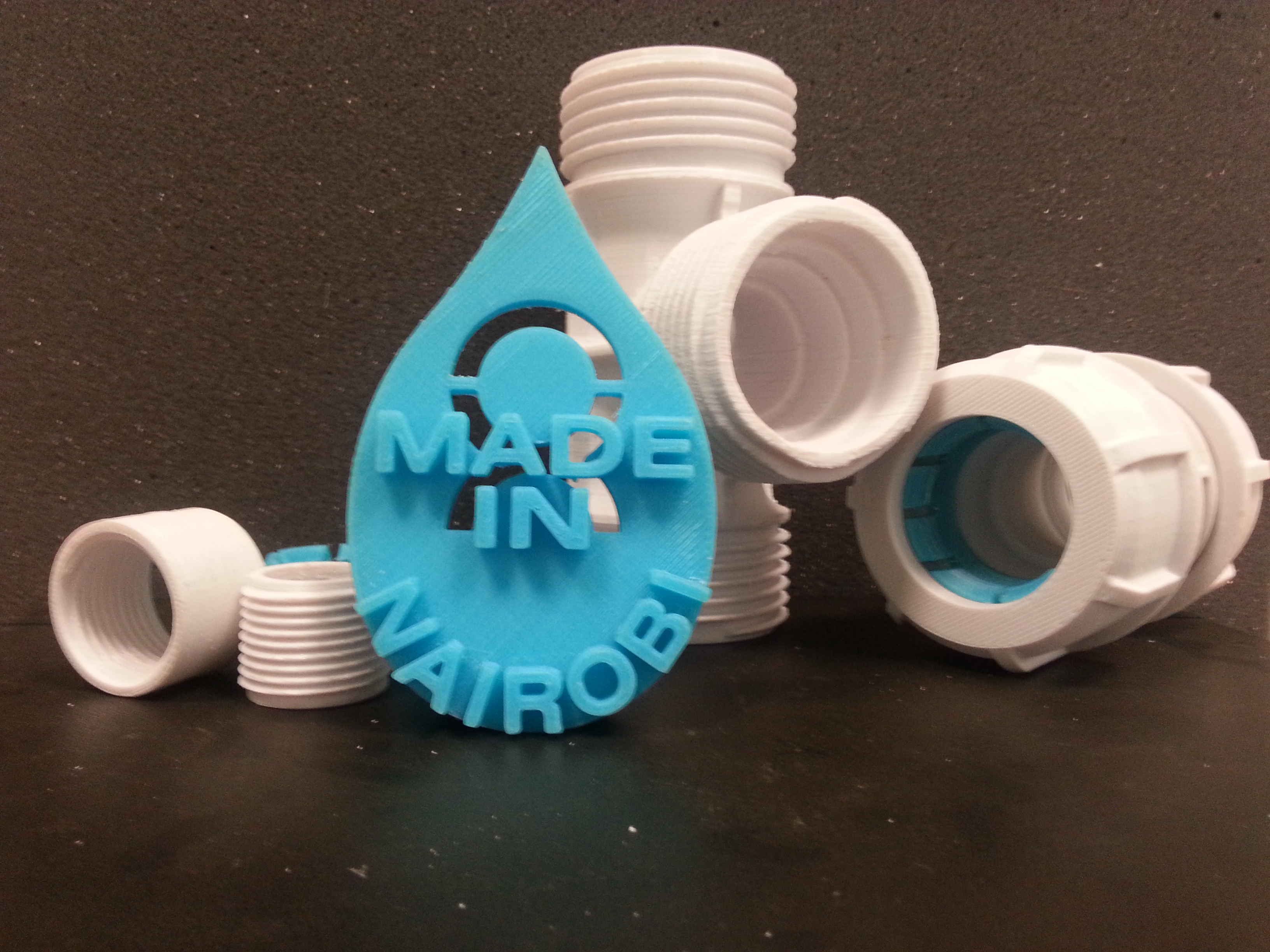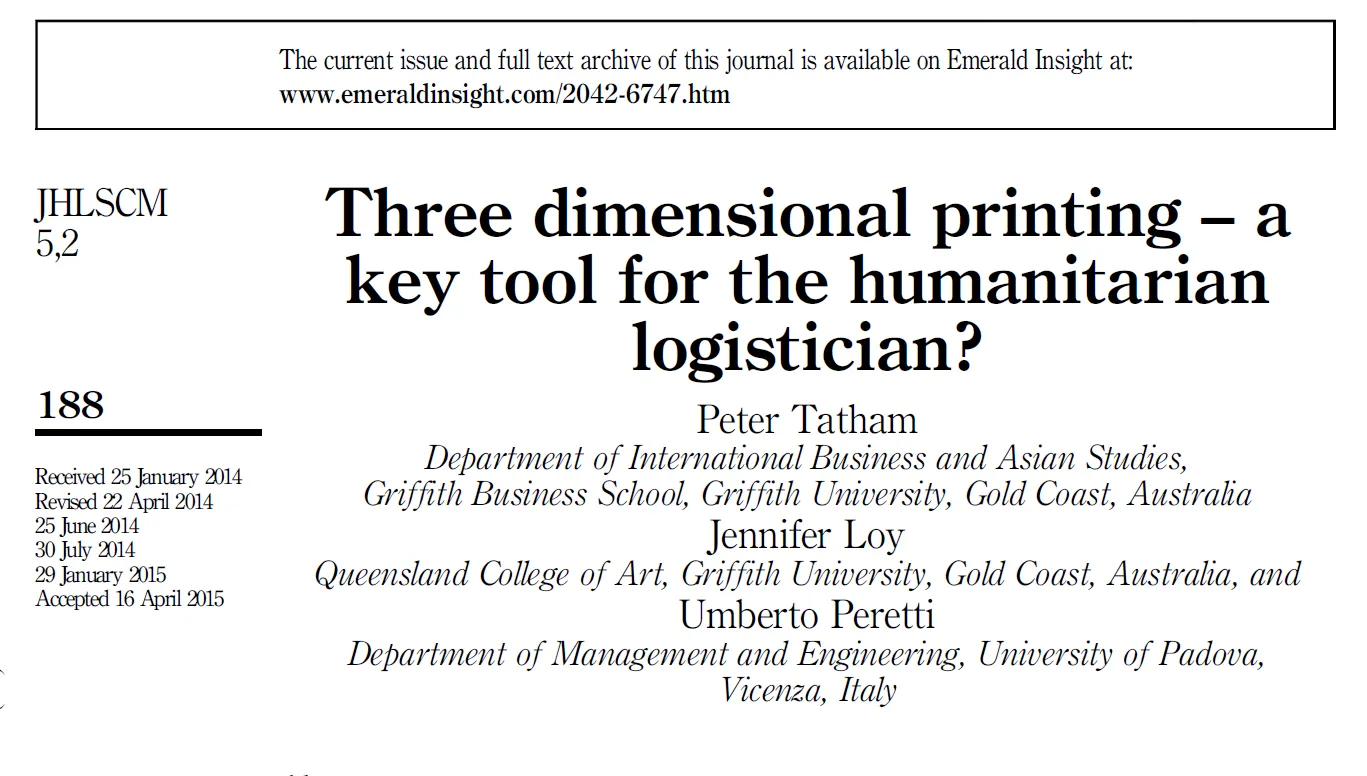3D Printing – A key tool for the humanitarian logistician?

The above paper has recently been published in the Journal of Humanitarian Logistics and Supply Chain Management. It reports the results of a trial of 3D Printing that recently took place in Kenya with the support of Oxfam GB by researchers from Griffith University (QLD, Australia).
The pilot research confirms that the benefits of 3D Printing in bespoke commercial contexts - including the reduction of supply chain lead times, the use of logistic postponement techniques and the provision of customised solutions to meet unanticipated operational demands - are equally applicable in a humanitarian environment. It also identifies a number of key challenges that will need to be overcome in the operationalisation of the concept in a development/disaster response context, and proposes a hub-and-spoke model – with the design and testing activities based in the hub supporting field-based production at the spokes – to mitigate these.
The research was funded by a Humanitarian Innovation Fund Invention Grant, with additional support from Griffith University, RedR (Australia) and HK Logistics PLC. The development of the next phase of research is currently the subject of a Development Grant application to the HIF, with the support of both Griffith University and the Australian Department of Foreign Affairs and Trade (DFAT) InnovationXchange.
Unfortunately, for copyright reason, the full text of the paper cannot be attached, however the details are on the following screenshot:

Stay updated
Sign up for our newsletter to receive regular updates on resources, news, and insights like this. Don’t miss out on important information that can help you stay informed and engaged.
Related articles
.png)


Explore Elrha
Learn more about our mission, the organisations we support, and the resources we provide to drive research and innovation in humanitarian response.